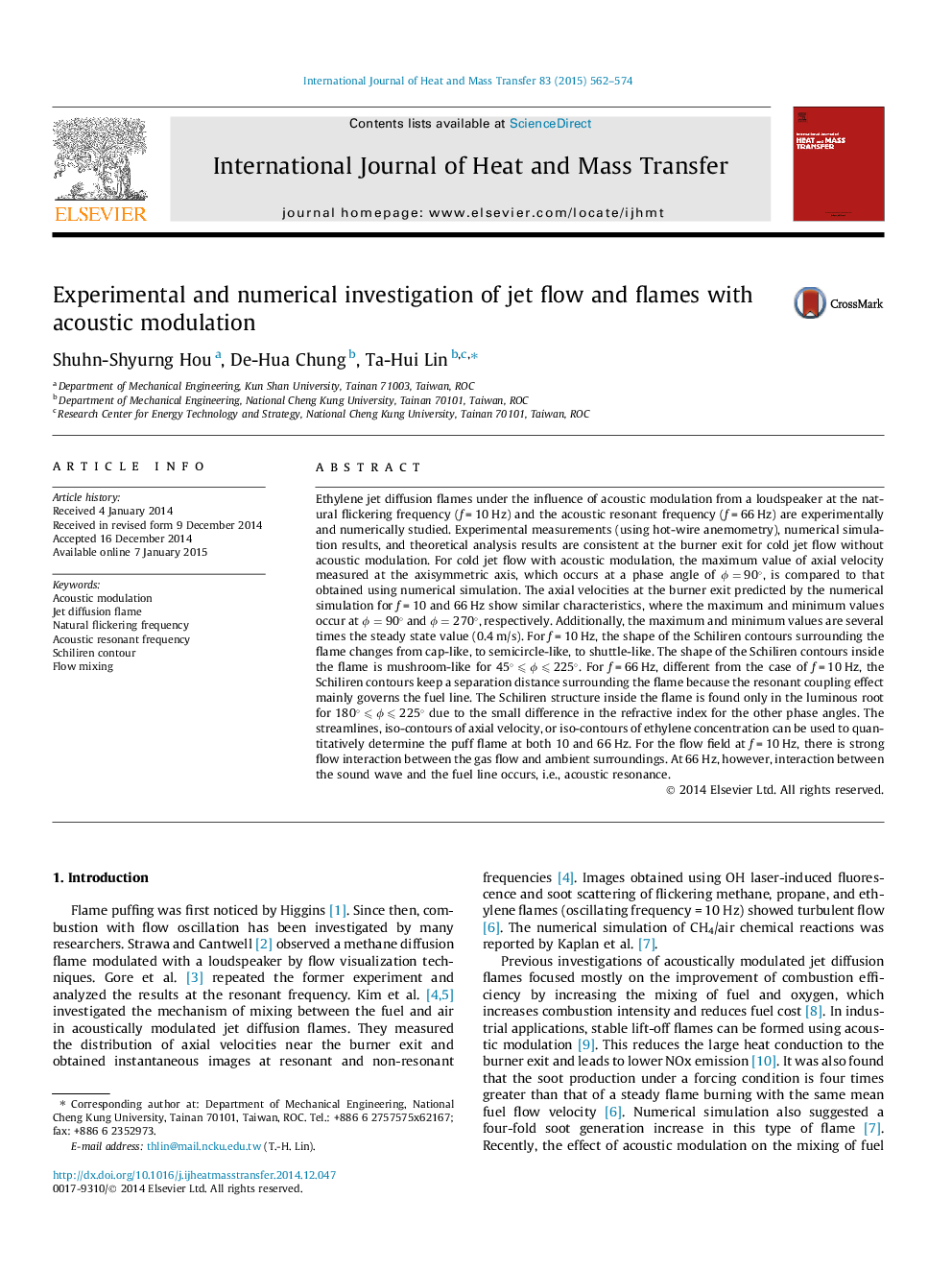| کد مقاله | کد نشریه | سال انتشار | مقاله انگلیسی | نسخه تمام متن |
|---|---|---|---|---|
| 657209 | 1458059 | 2015 | 13 صفحه PDF | دانلود رایگان |
عنوان انگلیسی مقاله ISI
Experimental and numerical investigation of jet flow and flames with acoustic modulation
ترجمه فارسی عنوان
بررسی تجربی و عددی جریان جت و شعله با مدولاسیون صوتی
دانلود مقاله + سفارش ترجمه
دانلود مقاله ISI انگلیسی
رایگان برای ایرانیان
کلمات کلیدی
مدولاسیون آکوستیک، شعله نفوذ جت، فرکانس نوردهی طبیعی، فرکانس رزونانس آکوستیک، خط شیلیرن، جریان مخلوط،
موضوعات مرتبط
مهندسی و علوم پایه
مهندسی شیمی
جریان سیال و فرایندهای انتقال
چکیده انگلیسی
Ethylene jet diffusion flames under the influence of acoustic modulation from a loudspeaker at the natural flickering frequency (f = 10 Hz) and the acoustic resonant frequency (f = 66 Hz) are experimentally and numerically studied. Experimental measurements (using hot-wire anemometry), numerical simulation results, and theoretical analysis results are consistent at the burner exit for cold jet flow without acoustic modulation. For cold jet flow with acoustic modulation, the maximum value of axial velocity measured at the axisymmetric axis, which occurs at a phase angle of Ï=90°, is compared to that obtained using numerical simulation. The axial velocities at the burner exit predicted by the numerical simulation for f = 10 and 66 Hz show similar characteristics, where the maximum and minimum values occur at Ï=90° and Ï=270°, respectively. Additionally, the maximum and minimum values are several times the steady state value (0.4 m/s). For f = 10 Hz, the shape of the Schiliren contours surrounding the flame changes from cap-like, to semicircle-like, to shuttle-like. The shape of the Schiliren contours inside the flame is mushroom-like for 45°⩽Ï⩽225°. For f = 66 Hz, different from the case of f = 10 Hz, the Schiliren contours keep a separation distance surrounding the flame because the resonant coupling effect mainly governs the fuel line. The Schiliren structure inside the flame is found only in the luminous root for 180°⩽Ï⩽225° due to the small difference in the refractive index for the other phase angles. The streamlines, iso-contours of axial velocity, or iso-contours of ethylene concentration can be used to quantitatively determine the puff flame at both 10 and 66 Hz. For the flow field at f = 10 Hz, there is strong flow interaction between the gas flow and ambient surroundings. At 66 Hz, however, interaction between the sound wave and the fuel line occurs, i.e., acoustic resonance.
ناشر
Database: Elsevier - ScienceDirect (ساینس دایرکت)
Journal: International Journal of Heat and Mass Transfer - Volume 83, April 2015, Pages 562-574
Journal: International Journal of Heat and Mass Transfer - Volume 83, April 2015, Pages 562-574
نویسندگان
Shuhn-Shyurng Hou, De-Hua Chung, Ta-Hui Lin,
